An aurora (plural: auroras or aurorae) is a natural light display in the sky, particularly in the polar regions, caused by the collision of charged particles directed by the Earth's magnetic field. An aurora is usually observed at night and typically occurs in the ionosphere. It is also referred to as apolar aurora or, collectively, as polar lights
It is also referred to as apolar aurora or, collectively, as polar lights . These phenomena are commonly visible between 60 and 72 degrees north and south latitudes, which place them in a ring just within the Arctic and Antarctic polar circles. Auroras do occur deeper inside the polar regions, but these are infrequent and often invisible to the naked eye.
. These phenomena are commonly visible between 60 and 72 degrees north and south latitudes, which place them in a ring just within the Arctic and Antarctic polar circles. Auroras do occur deeper inside the polar regions, but these are infrequent and often invisible to the naked eye.
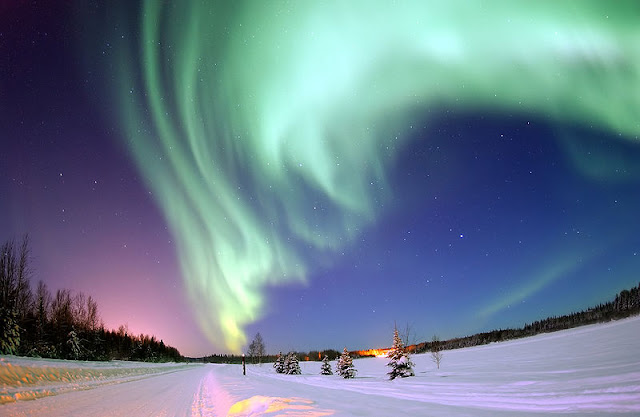
In northern latitudes, the effect is known as the aurora borealis (or the northern lights), named after the Roman goddess of dawn, Aurora, and the Greek name for the north wind, Boreas, by Pierre Gassendi in 1621. The chance of visibility of the aurora borealis increases with proximity to the North Magnetic Pole.
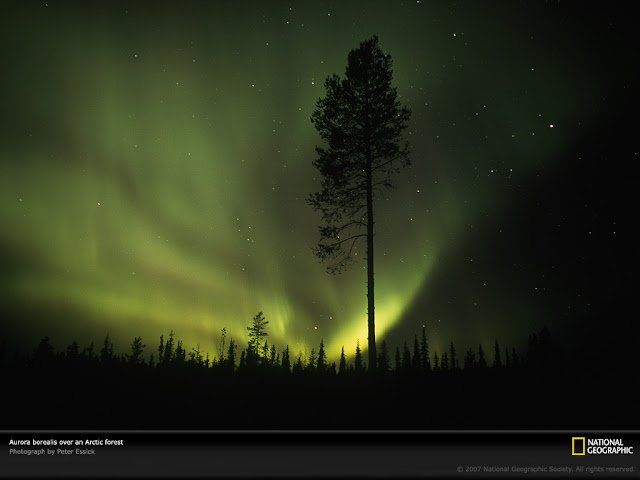
Auroras seen near the magnetic pole may be high overhead, but from farther away, they illuminate the northern horizon as a greenish glow or sometimes a faint red, as if the Sun were rising from an unusual direction. The aurora borealis most often occurs near the equinoxes.





Its southern counterpart, the aurora australis (or the southern lights), has similar properties, but is only visible from high southern latitudes in Antarctica, South America, or Australasia. Australisis the Latin word for "of the South".
Auroras can be spotted throughout the world and on other planets. They are most visible closer to the poles due to the longer periods of darkness and the magnetic field.
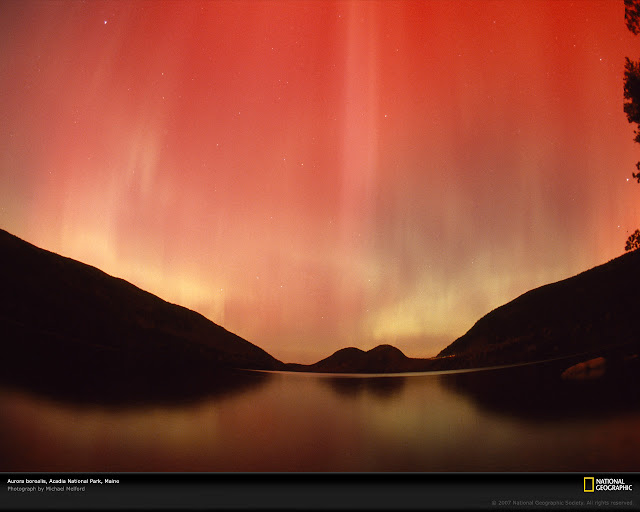

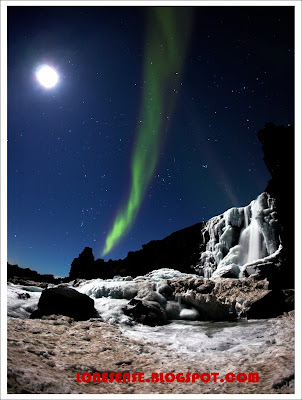
Auroras result from emissions of photons in the Earth's upper atmosphere, above 80 km (50 miles), from ionized nitrogen atoms regaining an electron, and oxygen and nitrogen atoms returning from an excited state to ground state. They are ionized or excited by the collision of solar wind particles being funneled down and accelerated along the Earth's magnetic field lines; excitation energy is lost by the emission of a photon of light, or by collision with another atom or molecule:
- oxygen emissions
- Green or brownish-red, depending on the amount of energy absorbed.
- nitrogen emissions
- Blue or red. Blue if the atom regains an electron after it has been ionized. Red if returning to ground state from an excited state.



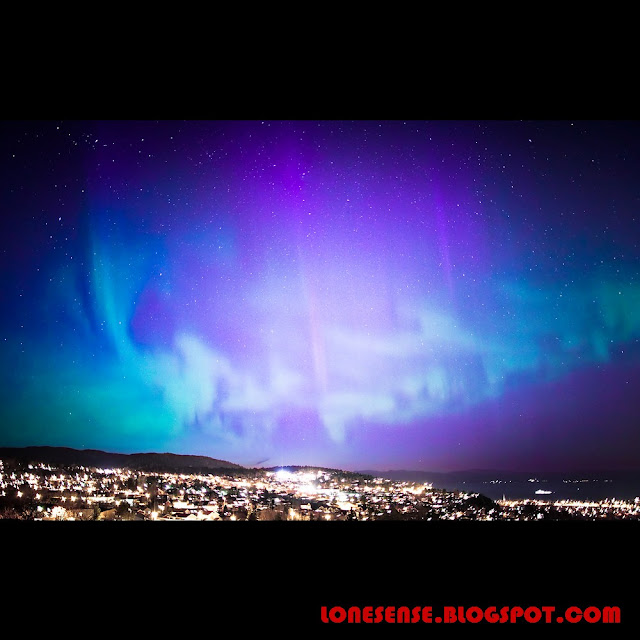

No comments:
Post a Comment